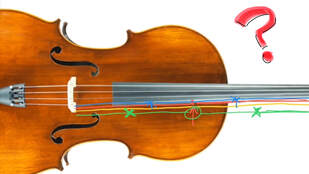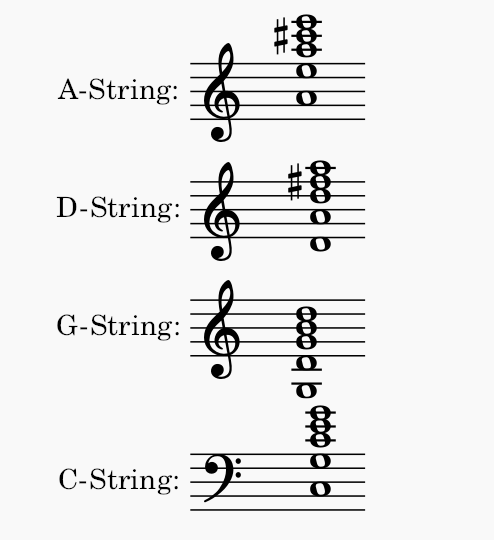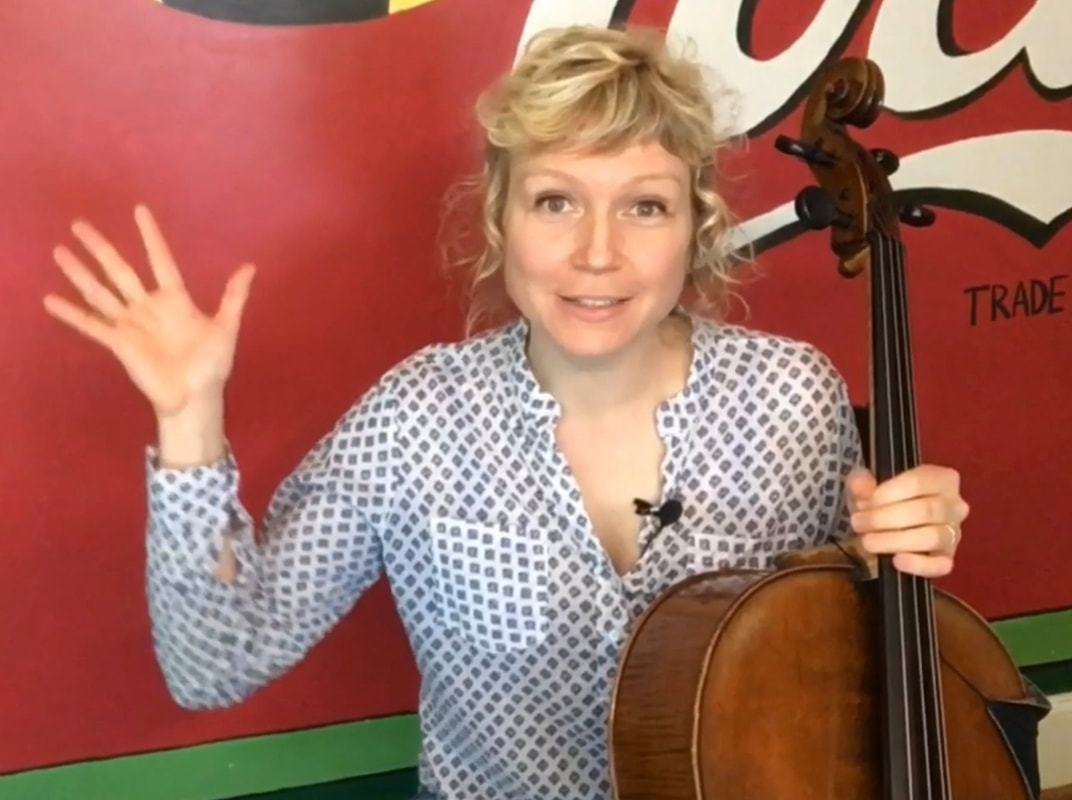| We've all been there, squeaking and cursing away as we try to figure out harmonics- what they are, where they are, and how to keep from going insane as we practice them. I feel your pain! This topic is still a bit mysterious, even to the most seasoned professional. We might know, theoretically, where all the different pitches are found, but executing harmonics can be tricky. And it doesn't help that the notation and nomenclature surrounding harmonics is not standardized! |
I made the video below to help answer a few most common questions about harmonics.
This video is by no means comprehensive! If I included all the information on this topic, I feel like the video would be longer than The Lord of the Rings Trilogy!
Which Notes Where?
| Wondering which notes are generally available on each string? Here's that rough guide from the video that you can refer to (see figure at left). And where can you find those notes?
|
Loads of Nodes
If you still have unanswered questions, here are a few websites on harmonics I really like:
- PRACTICAL BASICS: https://www.vsl.co.at/en/Cello/Notation/ Go down two-thirds of the page to the heading Notation for Fingerings (left hand); diamond harmonics are referred to as "fingering notation" and the non-diamonds are "sound notation."
- ILLUSTRATION OF HARMONIC FRACTIONS (and a nice overview of everything having to do with harmonics):http://www.moderncellotechniques.com/left-hand-techniques/harmonics/harmonics-overview/ This article refers to artificial or false harmonics as "stopped" harmonics.
- PHYSICS LESSON: https://physics.info/waves-standing/ If you want to know more about what nodes are and why they are found on fractions of the string, this article is helpful--and even goes more in depth than what we need to play the cello.
- HARMONICS FROM A COMPOSER'S POINT OF VIEW: http://www.timusic.net/debreved/harmonics/ This blog post is so interesting since it approaches the topic from an arranger/composer perspective, and we can get a glimpse into the world of the people who write these crazy notes for us to play...
Examples
Test your harmonic knowledge with these passages:
Is the note indicated by the red arrow a natural or artificial (false) harmonic?
Need more practice?
Try these exercise books dedicated to harmonics:
- R. Caroline Bosanquet's Fun with Cello Harmonics
- Cassia Harvey's Artificial Harmonics for Cello Book 1
Or take a look at this piece using natural harmonics from CelloExpressions.com (bottom notes indicate rhythm and string, middle notes show where to place your finger, and the top notes indicate the sounding pitch):





 RSS Feed
RSS Feed